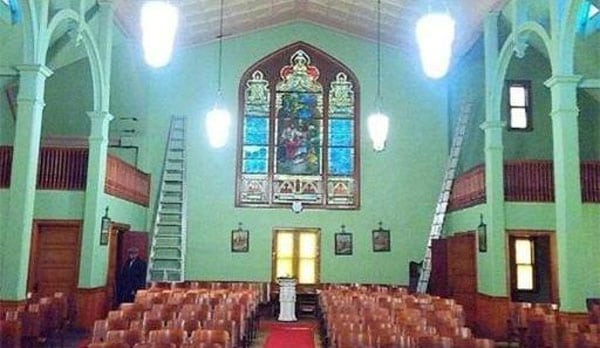
July 25, 2018; Bay State Banner
According to the Bay State Banner, Historic Boston Incorporated (Historic Boston, or HBI) announced it would purchase and protect St. James African Orthodox Church in Roxbury. The nonprofit, whose mission is to redevelop at-risk historic buildings in order to help Boston’s neighborhoods thrive, is now approaching the community for ideas on how to best put the space to use.
Despite its worn appearance, the old church signifies something deep and lasting to the Roxbury community. The Boston Globe notes the church’s historical importance:
First built for a Norwegian congregation in 1910, the building later housed a branch of the African Orthodox Church, which has close ties to civil rights activist Marcus Garvey. The Norwegian congregation sold the building to the AOC in 1955, but the Free Evangelical Church of America still considers the Cedar Street building to be its “mother church.”
The Bay State Banner also details how St. James served as a central resource for the local immigrant community—especially for West Indian immigrants, who, as part of the African Orthodox Church, were vital in the movement to bring African and diaspora black communities closer together. In the Banner, Kathleen von Jena, assistant survey director for the Boston Landmarks Commission, says, “The AOC helped raise a nascent African American consciousness that came to define the Civil Rights movement and the idea of African American autonomy.”
Sign up for our free newsletters
Subscribe to NPQ's newsletters to have our top stories delivered directly to your inbox.
By signing up, you agree to our privacy policy and terms of use, and to receive messages from NPQ and our partners.
When the possibility arose that the church might be torn down and replaced with residential housing, the community petitioned for the church to be saved—and in doing so, gained government attention. This jumpstarted the journey to Historic Boston purchasing the property.
Now that the building has been bought, Historic Boston is looking to local residents for a direction forward. Some suggested ideas include turning the sanctuary into a community center and using the basement as a performance space for Nathan Hale, an elementary school nearby.
The conservation impact of Historic Boston is undeniable. Another of their projects is restoring the Fowler-Clark-Epstein Farm, which was dates to 1786, and transforming it into an urban farming education and training center for the Urban Farming Institute. They bridge the gap between preserving tradition and meeting future and current needs, and approach it in a way that promotes active community and that makes gentrification that much less easy.
Though HBI centers ideals of community preservation, all nonprofits can learn an important lesson from their approach toward involving community members in decision-making. Too often, the “saviorism” mentality leads organizations to make community decisions from a siloed tower. We have our experts, our strategists, and our visionaries bringing our mission to life. But in reality, the real expertise, strategies, and visions are best when they come from those whom we seek to serve or represent in some way because that decision-making comes with investment and power and legitimacy that others do not have.
How can we dare to take community collaboration to the next level? In what ways do our market researchers and consultants share similar blind spots with us, perpetuating projects that are good…but not transformational? Historic Boston spurs us to consider how can we center marginalized community voices into the vision-setting of the future.—Kelly Phipps











